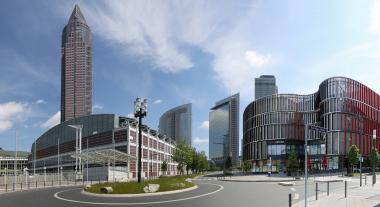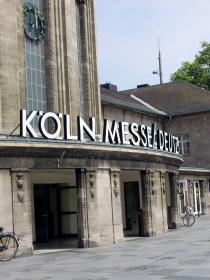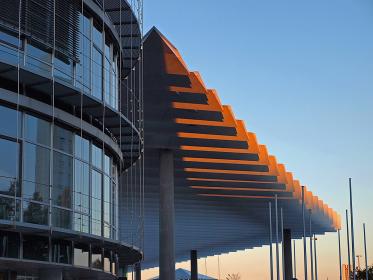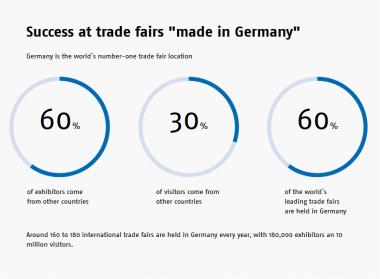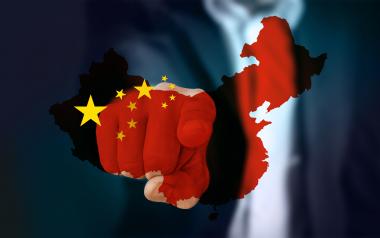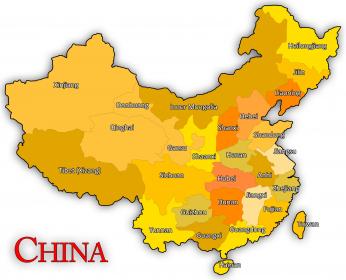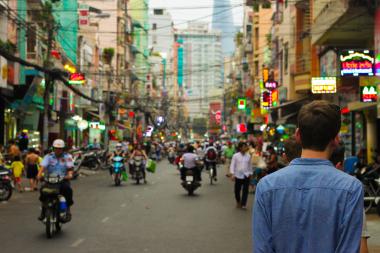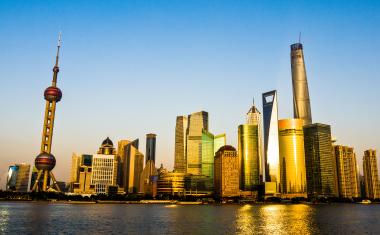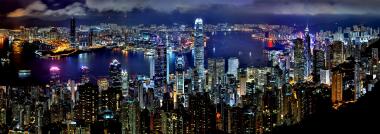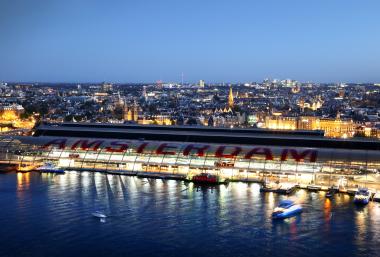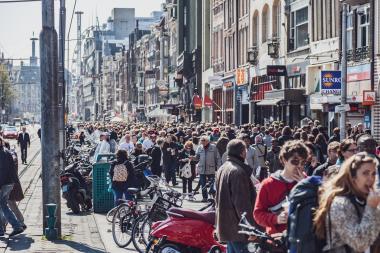Germany’s Trade Fair Market
Number one worldwide
Germany is the world's number one location for international trade fairs. Some 160 to 180 international and national trade fairs are held in the country every year, with around 180,000 exhibitors and ten million visitors. Trade fairs in Germany bring partners together from around the world. They are forums for communication and innovation that reflect the world's markets. Around two-thirds of all global trade fairs are held in Germany
Important for the overall economy
Exhibitors and visitors spend a total of around €14,5 billion a year for their activities at trade fairs in Germany. The overall effect on economic production amounts to €28 billion German exhibition organisers post sales of around €4 billion a year. Of the ten highest-grossing trade fair companies in the world, five are headquartered in Germany.
Trade fair organisation secures a total of about 231,000 jobs. An average of two employees at exhibiting companies work on trade fairs. With around 58,000 companies currently active in the B2B segment at trade fairs, that means more than 100,000 full-time jobs.
Advantages for Germany as a trade fair location
State-of-the-art event facilities
Germany has 25 exhibition venues of international or national significance, with a combined hall space of 2.8 million square metres. The country’s exhibition facilities set international standards in architecture, logistics and technology. German exhibition centers invest around 300 million euros a year in optimising their facilities.
Four of the world’s eight largest exhibition venues are located in Germany, and ten venues in the country each have hall capacities of more than 100,000 square metres. Regional exhibition centers offer an additional combined hall space of around 380,000 square metres.
High international presence
A special competitive advantage of German trade fairs is their international appeal – the fairs draw the world’s markets into the country. Almost 60% of the approximately 180,000 exhibitors a year come from abroad, and one-third of these from countries outside Europe. Of the 10 million visitors each year, nearly 30% come from abroad.
Leading service standards
German organisers offer exhibiting companies a wide range of services. They support exhibitors by booking travel and accommodations and by doing press, publicity and marketing work. They also continuously expand their spheres of activity. In addition, many trade fair organisers have installed permanent online marketplaces, making them expert marketing partners for exhibiting companies throughout the year.
Excellent cost-benefit ratio
Trade fairs in Germany have moderate stand fees compared to other international sites. At the same time, they attract a high quantity and quality of visitors, which means that exhibitors in the country come into contact with many potential customers. Costs per visitor contact are favourable compared to trade fairs in other countries and to other marketing media.
Attractive regional trade fairs
The international and national trade fairs are supplemented by a dense network of well-organised regional trade fairs for distinct target groups. They include both specialist and consumer fairs. These events draw a total of around 50,000 exhibitors and 6 million visitors a year.
The exhibition business structure in Germany
Organisers
Approximately 100 exhibition organisers are active in Germany, around 40 of which handle international fairs. The largest of them are amongst the highest-grossing trade fair companies in the world. This makes the exhibition business one of the leading service sectors in Germany, also in comparison to other countries.
The German organisers in AUMA put on around 300 trade fairs in other countries – primarily in major growth regions such as Asia, North America, South America and Eastern Europe. That too benefits the German economy, because it needs expert partners for its trade fair activities – particularly in highly competitive foreign markets.
Exhibiting companies
Around 58,000 German companies are active exhibitors in the B2B segment. The majority of them are in the manufacturing sector (55 %), followed by the service sector (23 %), and trade (20 %). Medium-sized companies dominate in terms of both number of employees and sales: 51 % of exhibitors have fewer than 50 employees, and 39 % have 50 to 499. Some 47 % of exhibiting companies post sales of up to 2.5 million euros, and 35 % of 2.5 to 50 million euros.
Visitors
The percentage of decision-makers among all trade fair visitors is exceptionally high at 63 %. Managing directors, board members and self-employed people from Germany make up 35 % of trade visitors, and 73 % of those from abroad. The latter group commands above-average decisional powers, with 91 % having determining or co-determining influence on business decisions. Thirteen per cent of trade fair visitors come from companies with more than 1,000 employees, including top decision-makers from global corporations. Some 54 % of trade visitors come from companies with fewer than 60 employees.
AUMA Association of the German Trade Fair Industry


